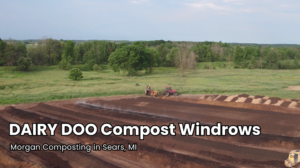Aug 13, 2025Research links modern-day potato to tomato plant ancestors
New international research has shed light on the origins of the modern-day potato, tracing the formation of tubers back millions of years to tomato plant ancestors.
In a study published by Cell Press, researchers suggest that natural interbreeding in the wild between tomato plants and potato-like species from South America about 9 million years ago triggered the formation of the tuber.
The potato’s origin has long been a scientific mystery. Modern potato plants appear almost identical to three potato-like species from Chile called Etuberosum, but these plants do not carry tubers. Phylogenetic analysis showed that potato plants are more closely related to tomatoes.
In a quest for answers, the research team analyzed 450 genomes from cultivated potatoes and 56 wild potato species. They found that every potato species contained a balanced mix of genetic material from both Etuberosum and tomato plants, suggesting that potatoes originated from an ancient hybridization.
“Wild potatoes are very difficult to sample, so this dataset represents the most comprehensive collection of wild potato genomic data ever analyzed,” said paper co-author Zhiyang Zhang of the Agricultural Genomics Institute at Shenzhen, Chinese Academy of Agricultural Sciences in remarks reported by morningagclips.com.
While distinct species, Etuberosum and tomatoes shared a common ancestor about 14 million years ago, according to the research team. Even after diverging for about 5 million years, they were able to interbreed, creating the earliest potato plants with tubers.
The team also traced the potato’s tuber-forming genes. They found the SP6A gene, which switches on the tuber-making process, came from the tomato side of the family. Another gene called IT1, which helps regulate growth of the underground stems that form tubers, came from the Etuberosum side.
This evolutionary innovation coincided with rapid elevation increases, or uplift, of the Andes mountains. With a tuber to store nutrients underground, early potatoes quickly adapted to the changing environment.
Tubers also allow potato plants to reproduce by simply sprouting from buds, a trait which also contributed to potatoes’ rapid expansion.















